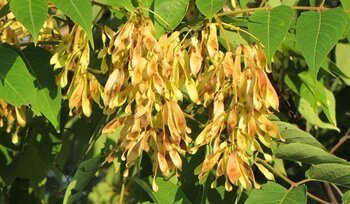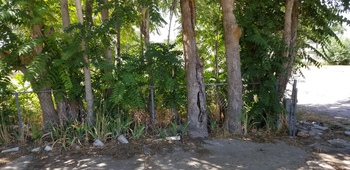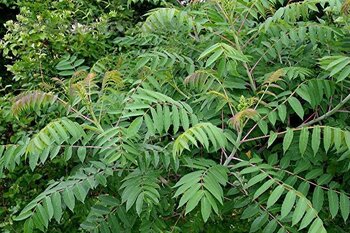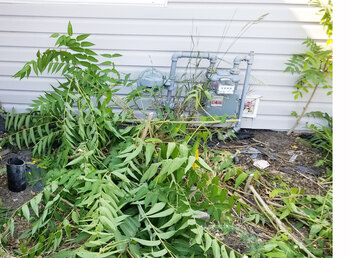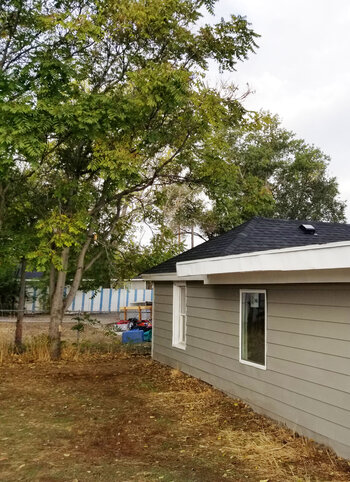Tree Index
- The trees in green are ones that we recommend. These are tried and true trees that thousands of Utah homeowners have in their yard and are very pleased with. These are also trees that our tree service has had a very positive experience with.
- The in yellow are trees that we don’t have a strong recommendation to remove or to keep. These are trees that have some problems but have positive attributes as well.
- The trees in red are trees that we have a very strong recommendation to remove from your property as soon as possible. These are known as trash or invasive trees and cause a lot of property damage. These bad trees can spread thousands of seeds and can rapidly infest your yard and landscaping with unwanted saplings. They can also lift up concrete, crack foundations, and destroy sprinkler lines, water lines, and sewer lines, not to mention the havoc they create on septic systems.
We have put together a list of common trees that we come across in our tree service. These are trees that are common and grow well in Ogden/Layton, Utah and surrounding areas. About 90% of the calls we get are regarding trees on this list. This list can be a great reference for the homeowners who are seeking tree service and want to make educated decisions. This tree guide is also very helpful for those looking to replace old trees with a better tree variety.
Softwood
Keep in mind that the fast growing softwood trees usually shed more branches and tree debris than do the slow growing hardwood trees. Homeowners often plant these trees (for example, willows and poplars) because they want immediate shade and they plan on removing them at some future point.
Generally speaking, softwoods are very fast growing and don’t have sufficient strength to withstand windstorms. They also drop a lot of debris and are the messiest of trees. These trees are short lived and rarely make it more than 30-50 years without dying (depending on variety).
Medium Hardness
For those wanting shade quickly, a happy medium density wood might be best for them—a tree whose wood has medium hardness and that grows fast but not as fast as trash trees. Sycamores and honey locusts are good examples of these medium woods. Many trees in this category are not very messy. For example, the honey locust drops small leaves that hardly need to be raked up. It also drops seedpods that look like flat giant beans. These can be raked up and gathered. Compared to a willow or a Siberian elm, there is hardly enough tree debris to clean up to worth mentioning.
Like the hardwoods, trees of medium hardness can live a long time. It is not uncommon for a sycamore to live to be over 100 years old. These trees are strong and withstand even the fiercest windstorms with little to no damage.
Hardwoods
This category includes the great oaks and maples of North America. These trees can live for hundreds of years. They are very slow growing and extremely hard. Their wood is hard to saw with a chainsaw and hard to split for firewood. Hardwood trees provide the wood for some of our most beautiful and intricate furniture, including grand pianos, antique furniture, shelves, and other heirlooms.
For many homeowners, a hardwood is a long-term investment. Often people will plant a hardwood in their yard along with a few trees from the medium and softwood category so that they get immediate shade sooner. These trees take planning because in the end, they will be the ones that remain standing. Some hardwoods like the Walnut can be messy because the walnuts fall on the grass in autumn. Other hardwoods like the maple have very little clean up and are a relatively clean tree.
Rating Guide
We rate each tree on a scale from 1 to 5, 1 being the worst and 5 being the best.
Healthy, recommended trees:
Ash Trees (Patmore and autumn purple)
Green or White Ash
Rating: 4
Size: 40 ft tall
Shade: very shady
Type: Hardwood, fast growing
The patimore ash is a green ash seedless male and is a beautiful tree. We also like the autumn purple ash (white ash) as it is very pretty in the fall. In Ogden & Layton Utah and the surrounding areas, we recommend amending the soil with fertilizers and supplements for best results.
We like these trees and they do quite well once established. We do recommend periodical tree trimming to open up the dense canapoy and allow wind to pass through as we’ve seen these trees blow over in wind storms if they are not properly maintained.
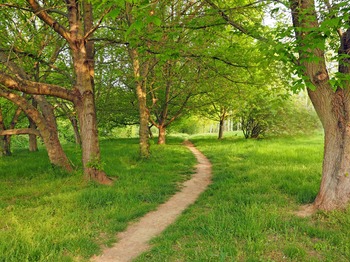
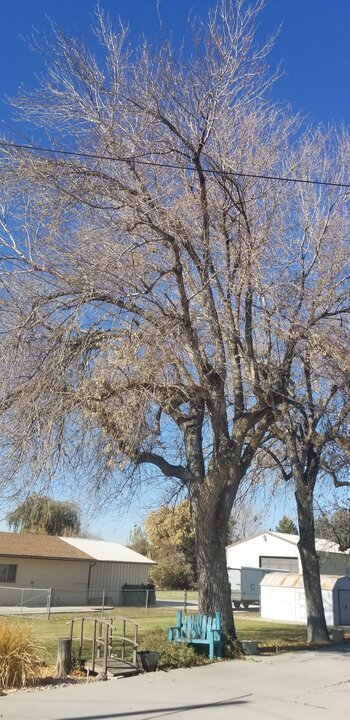
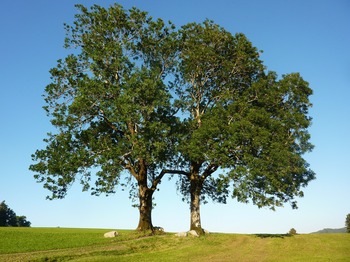
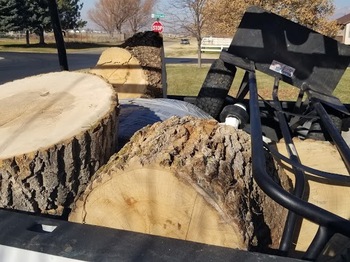
Cedar (Blue Atlas)
Cedar Tree (blue atlas)
Rating: 5
Size: 40-60
Shade: moderate shade
Type: softwood, fast growing
We recommend the blue atlas cedar for the ogden/latyon Utah metro areas. This fragrant evergreen tre has gorgeous red wood and is used by craftsmen to make cedar chests, Christmas tree ornaments, and other woodworking crafts.
We like this tree because it gives a rustic look and is fragrant and grows fine in the Ogden/Layton Utah area.
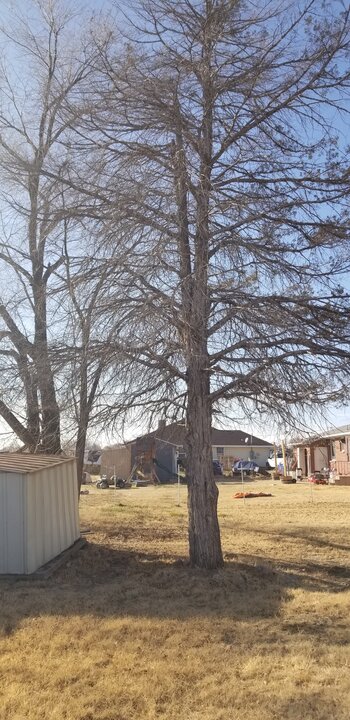
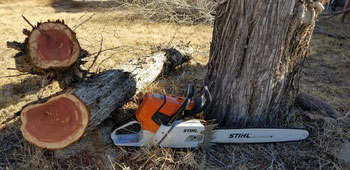
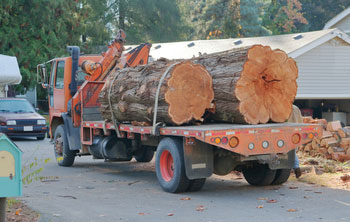
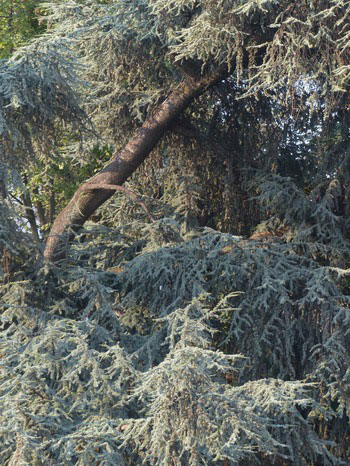
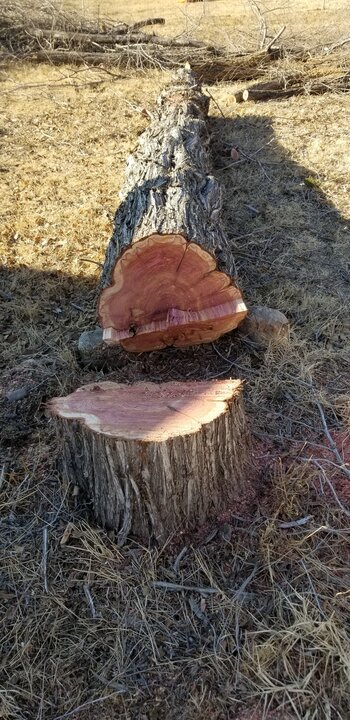
Crabapple Trees
Crabapple Tree
Rating: 5
Size: small varieties 10-15 ft and medium sized varieties 15-20 ft
Lifespan: 30-70 years
Shade: Medium to dense shade depending on variety
Type: deciduous hardwood slow to moderate growth speed
Crabapples are planted because like the Eastern Redbud and flowering cherry and plum trees, they provide abundant beauty in spring. The crabapple produces small berry like apples that stay on the tree through winter and provide food for birds.
There are over 50 varieties of crab apples and they come in various flower colors ranging from white to dark pink (same color as Eastern rosebud tree flowers). Most trees are smaller and are used in landscaping as ornamental trees. Popular varieties include the dark pink flowered prarifire and the brilliant white Spring Snow variety (Spring Snow tree is hardy and needs little water). The bark and leaves look very much like a regular apple tree.
Like apple trees, crabapples are subject to same diseases and pests, including fire blight, aphids,powdery mildew, and apple borer.
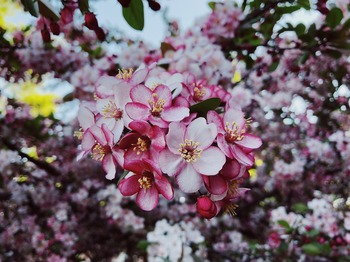
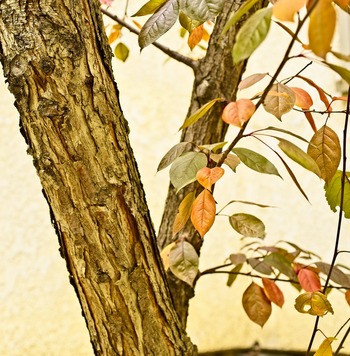
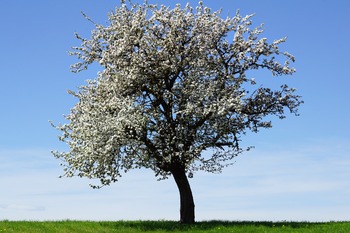
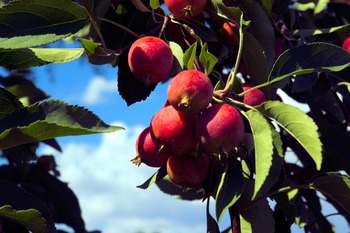
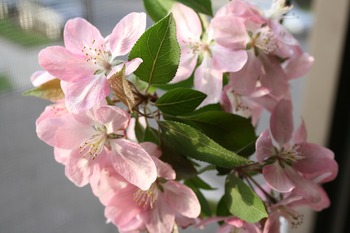
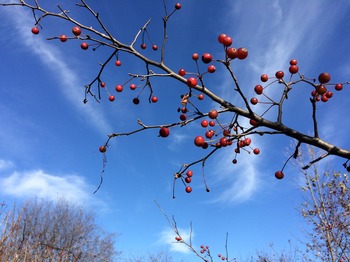
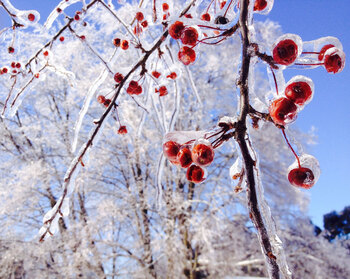
Eastern Redbud Tree
Eastern Redbud (cerciscanadensis)
Rating: 5
Size: 20-30
Lifespan: 25 years
Shade: Medium shade
Type: deciduous softwood fast growing
The eastern redbud tree is planted because of its stunningly beautiful dark pink flowers that blossom in spring. A short lived tree, the eastern redbud is susceptible to pests. The eastern redbud is one of the first trees to flower each year. Dieback/canker can be a problem with this tree variety as can anthracnose and verticilium wilt. Dieback/canker can be resolved by pruning below the problem area. Anthracnose and verticilium wilt can be treated. In the end, this tree is planted for its stunning beauty. Just be aware that it will not last forever.
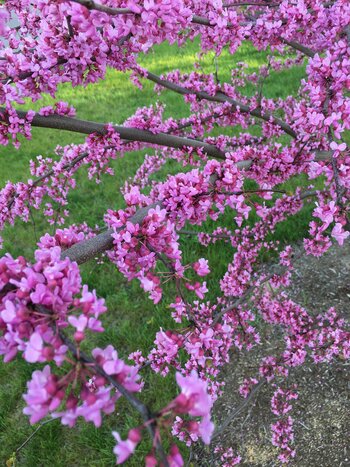
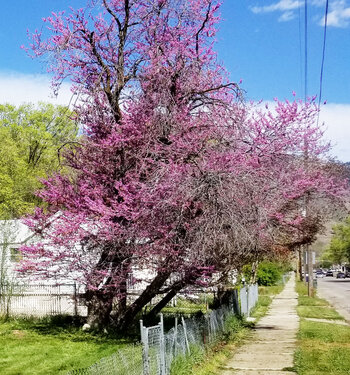
Flowering Cherry Trees
Flowering Cherry
Rating: 5
Size: small varieties 10-25 ft
Lifespan: 30-40 years
Shade: Medium to dense shade depending on variety
Type: deciduous hardwood slow to moderate growth speed
Much like the crabapple and flowering plum, the flowering cherry tree is an ornamental landscaping tree commonly planted in front yards for their exquisite beauty. Popular varieties include the pink large flowered Japanese flowering cherry and the weeping cherry tree varieties. Like the crabapple and flowering plum trees, there are a large number of varieties to choose from.
There are a number of diseases and pests that plague flowering cherry trees, most common among them being the cherry bore worm that tunnels in the trunk of the tree.
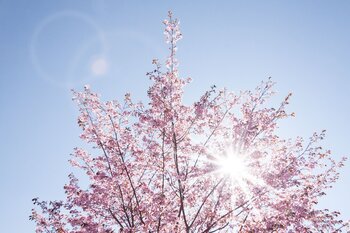
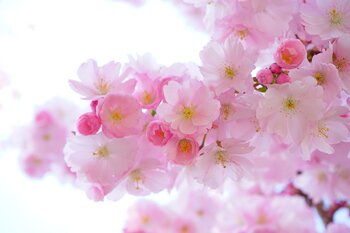
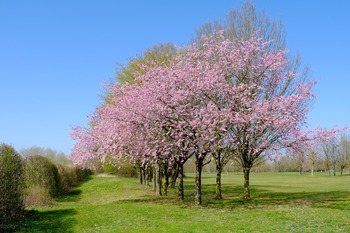
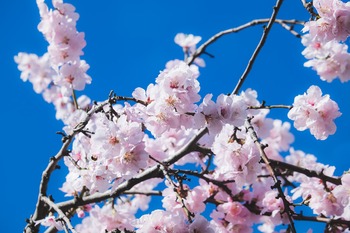
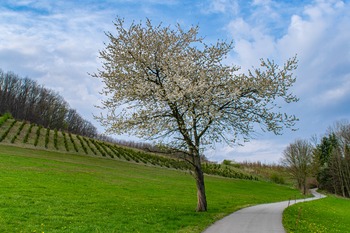
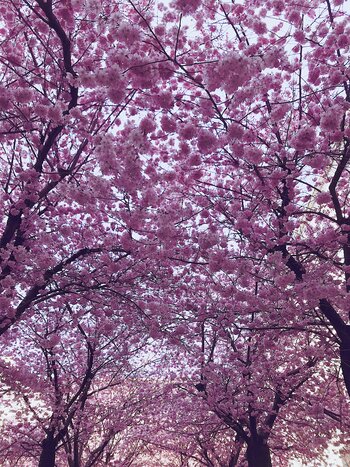
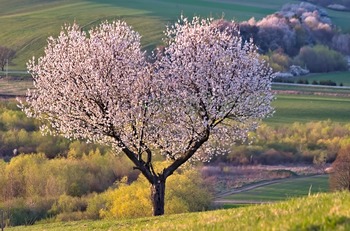
Flowering Pear Tree (Chanticleer, Cleveland)
Flowering Pear
Rating: 5
Size: 20-40 ft depending on tree variety
Lifespan: 25 years
Shade: Medium shade
Type: deciduous hardwood fast growing
Cleveland and Chanticleer flowering pear trees are perhaps the most popular flowering pear varieties in Ogden & Layton, Utah. Whereas the Cleveland tree is definitely a rounded shape, the Chanticleer tree is more of a tear drop shape. Known for their fragrance and beauty, these trees do quite well in yards and landscaping applications. In the spring, round clusters of pear blossoms ornament this tree while in the fall dark red and yellow leaves are common. Like other flowering trees, the choices are endless. They are many varieties of this tree to choose from.
Other common flowering pear tree varieties include Bradford and Aristocrat. The tree varieties we’ve mentioned are resistant to fireblight but not immune completely. Fireblight is a bacterial diseases that causes leaves and bark to become infected and die. The best treatment of fireblight is to trim and prune infected areas to prevent the spread of this disease. Unfortunately, there is no permanent cure to fireblight.
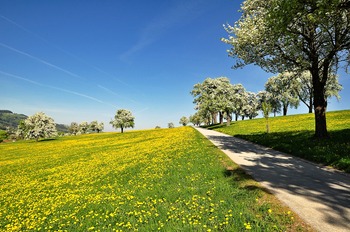
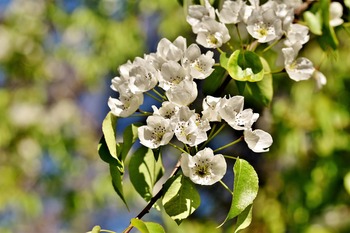
Flowering Plum Trees
Flowering Plum
Rating: 5
Size: 15-25ft depending on tree variety
Lifespan: 20 years
Shade: Medium shade
Type: deciduous hardwood fast growing
Common flowering plums have purple leaves and beautiful pink spring blossom. This tree is a low maintenance pretty tree that many homeowners use to landscape their yards. Like other flowering tree varieties
The diseases plum trees can be susceptible to include fungal cankers, galls and mildews.
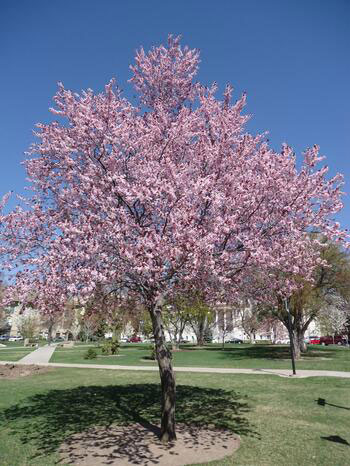
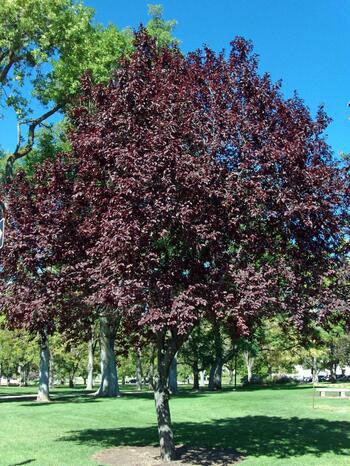
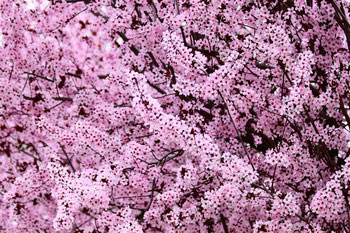
Honey Locust Trees (shademaster, skyline, imperial, sunburst)
Honey Locust
Rating: 5
Size: shademaster 45 ft, skyline 45 ft, imperial 35 ft, sunburst 35ft
Lifespan: up to 100 years
Shade: light dappled shade
Type: deciduous rapid growth medium density wood
The honey locust is one of my favorite trees. This low maintenance tree is a native to Utah and has very few natural predators, pests, and diseases. In fact, it is one of the few trees that deer will not eat.
Providing dappled light with small leaves, this tree is unusually easy to grow and drought resistant. Leaves are yellow in the fall. While the tree varieties mentioned above are sterile, they still do shed legume/bean pods. However, clean up is minimal and this tree will not drop branch debris like softwood trees do.
Plant only varieties from nurseries and watch out for the native wild variety indigenous to the mountains and fields of Utah as it produces sharp thorns from 3 to 5 inches long.
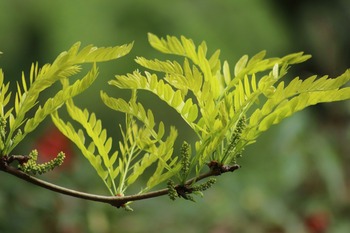
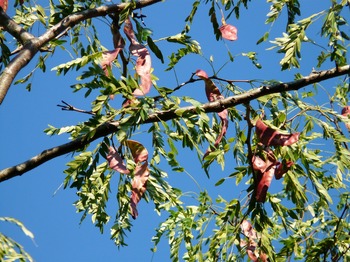
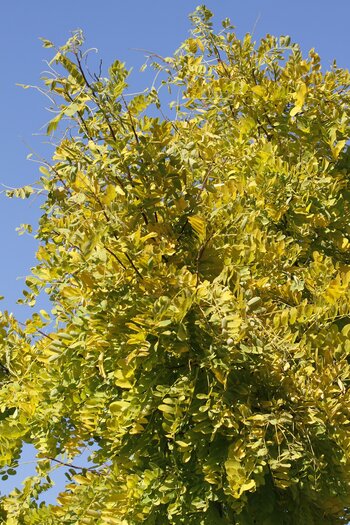
Lilac Tree
Lilac Tree (bush/shrub)
Rating: 5
Size: 10-15 ft
Lifespan: 40-50 years
Shade: very little; lilac trees are mostly planted for their pretty flowers as an ornamental tree/bush/shrub
Type: deciduous medium density wood
Lilac trees are very common in the cities of Ogden & Layton Utah and the surrounding areas. Among the smallest of trees and often considered a bush or a shrub, lilacs are very hardy and easy to grow and are not susceptible to common diseases and pests. Flowers bloom in spring and can be white or purple. These trees/bushes are found alongside the edge of a yard or house or along a fence to create a hedge.
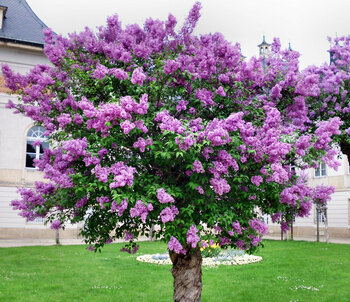
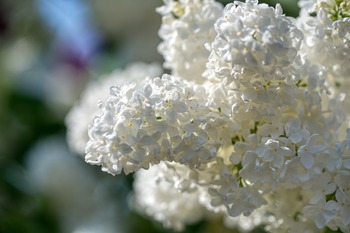
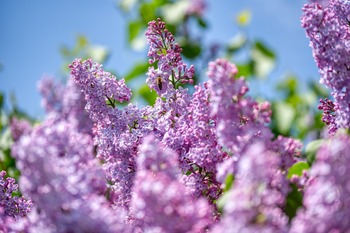
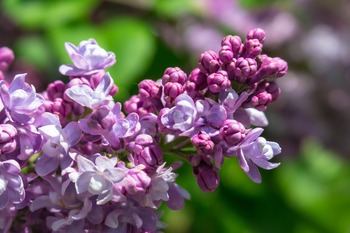
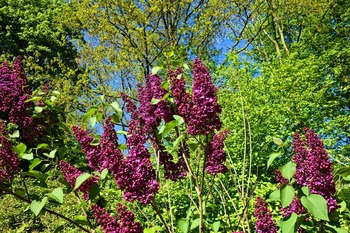
Linden Tree
American Linden Tree
Rating: 5
Size: 50-60 ft
Lifespan: 100 years
Shade: provides full shade
Type: deciduous hardwood medium growth speed of 13- 24 inches per year
Among one of the prettiest and practical hardwood trees for the yard, the American Linden tree yields fragrant flowers in late June. The flowers attract honeybees, which supposedly make the finest honey from Linden tree flowers. Leaves are dark green and heart-shaped with jagged edges. Bark is attractive and tree displays vibrant yellow fall colors typical of hardwoods.
This is a relatively hardy tree, although aphids have been known to sometimes be a problem.
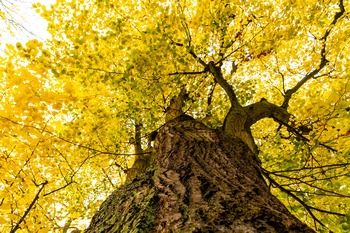
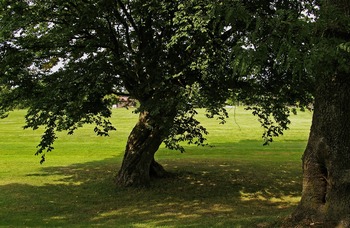
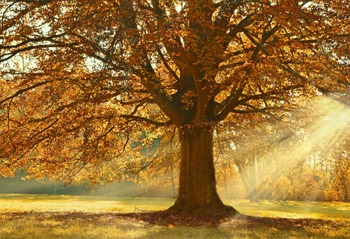
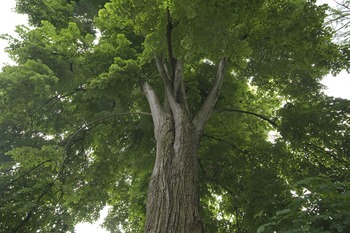
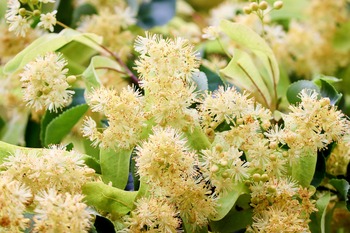
Magnolia Trees
Magnolia
Rating: 4
Size: 10-20 ft
Lifespan: in Utah they will last 50-80 years
Shade: provides full shade
Type: deciduous hardwood medium growth speed of 13- 24 inches per year
Magnolia trees are easy to love although with the exception of a few varieties, they do take some coddling in the Ogden and Layton UT areas. A native of the south, there have been a few magnolia tree varieties that have been adapted to colder climates. Royal Star is the hardiest with a cold-hardy zone of 4. This tree boasts a brilliant white star flower sometimes getting as big as four to six inches across. This tree hosts large fragrant white flowers. Centennial, Dawn, Brozzonii, Lennei, and San Jose tree varieties have also done well in Utah.
Pros: Gorgeous tree. Beautiful tree shape, limbs, leaves, and bark.
Cons: Is not native to Utah so it may take some coddling. Tree is from the South and needs to be protected from extreme cold until it is established. For best results, plant close to house or in a warm patch of the yard.
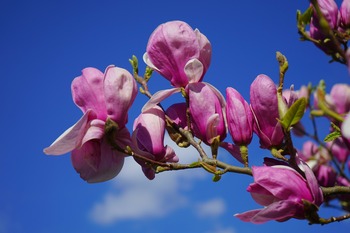
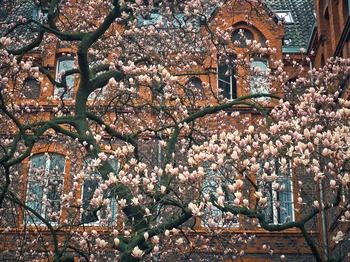
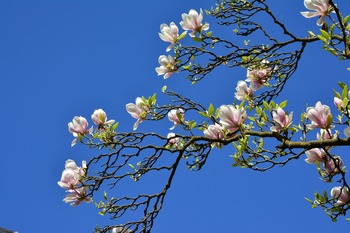
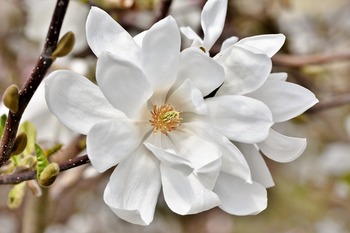
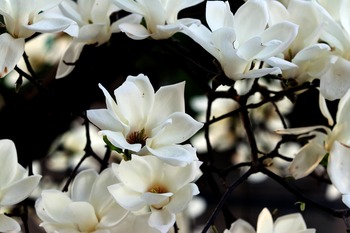
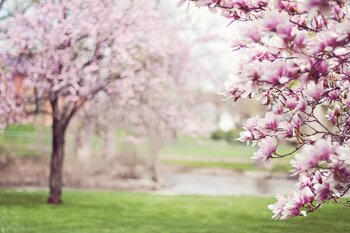
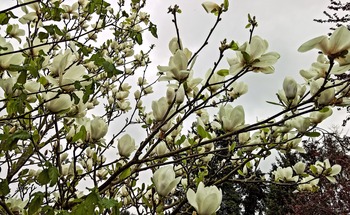
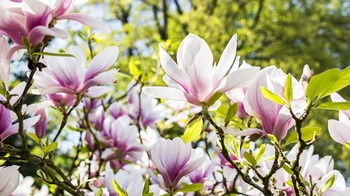
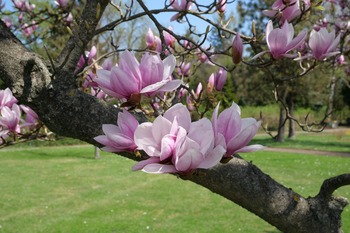
Maple Trees (Autumn Blaze, pacific sunset, Norwegian maple; urban sunset)
Maple Trees (autumn blaze, pacific sunset, Norwegian maple, urban sunset)
Rating: 5
Size: (autumn blaze 40-50 ft, pacific sunset 30 ft, Norwegian maple 40-60 ft, urban sunset 35 ft)
Lifespan: 130-300 years
Shade: Medium to dense shade
Type: hardwood fast growing
The maple tree is the classic tree you see in landscaping. It is kind of the benchmark by which other trees are measured. Maples are hardwoods with big leaves helicopter seeds, and beautiful yellow to red colors in the fall. Look for them at city parks and park strips.
Red maple tree varieties such as the autumn blaze do not tolerate Utah’s alkaline soil very well so amending the soil treatments including sulfur is necessary for these trees to thrive. Pacific Sunset, Norwegian and Urban Sunset trees seem to tolerate Utah soil conditions better and are easier to grow. No soil treatment is needed for these hardier tree varieties.
One word of caution, avoid the silver maple. While this is a faster growing maple than most, its roots usually come above ground and ruin the lawn and landscaping.
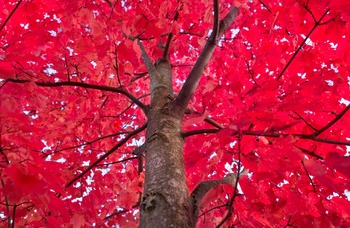
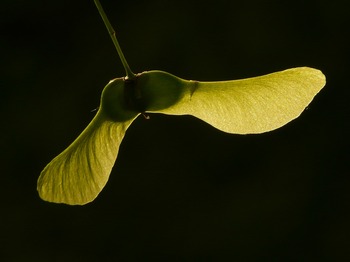
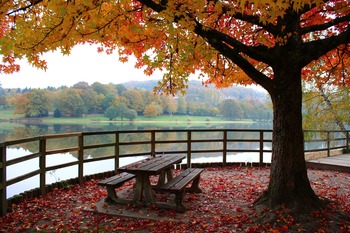
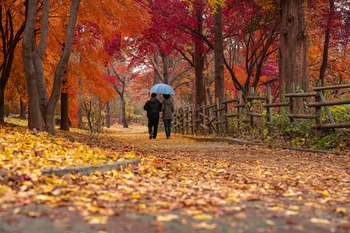
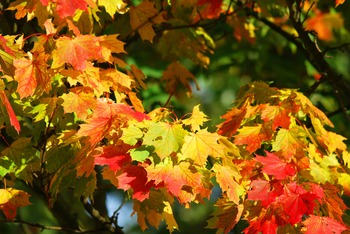
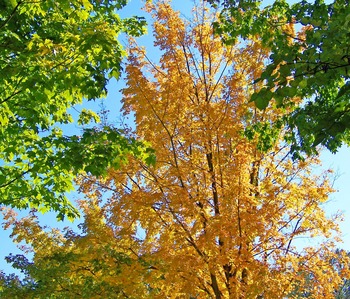
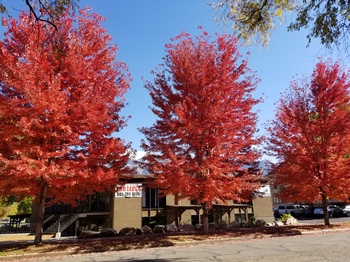
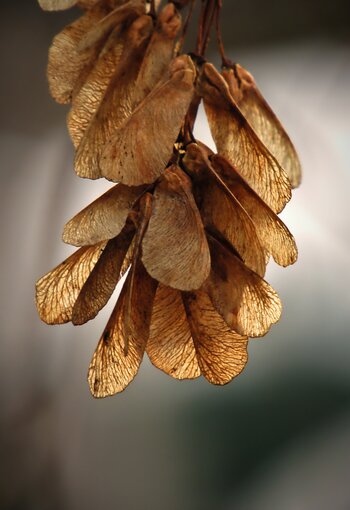
Oak Trees
Oak Trees (swamp oak, bur oak, columner oak)
Rating: 5
Size: (swamp oak 50-60 ft, bur oak 70-80 ft, columner oak 60 ft)
Lifespan: 200-300 years
Shade: dense shade
Type: deciduous hardwood bur and columner are slow growing with less than 12 inches growth per year while swamp oak is a moderately fast growing tree with 16-24 inches tree growth per year
Everybody knows about the native Utah scrub oak. These are short bush like oak trees that cover our mountains. Acorns are yet another thing most people are familiar with. Oak trees are among the most loved and most familiar of all trees. For yard and landscaping, we recommend the swamp oak tree, burr oak tree, and columnar oak tree. These specific oak tree varieties do well in Ogden and Layton Utah. Oak wood is among the hardest and most durable wood. Cabinets, pulpits, and doors are commonly made of oak tree wood. Like most hardwoods, the deciduous leaves drop in the fall as do the acorns. Leaves typically are yellow in the fall.
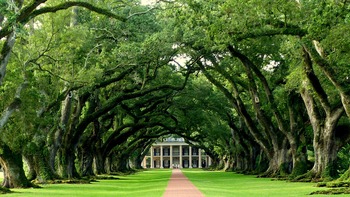
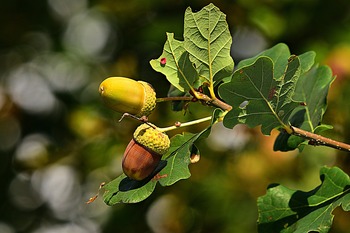
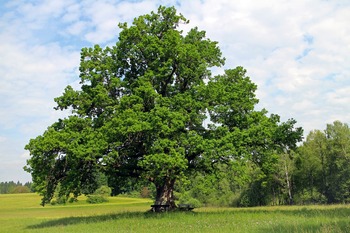
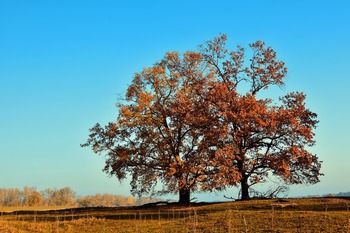
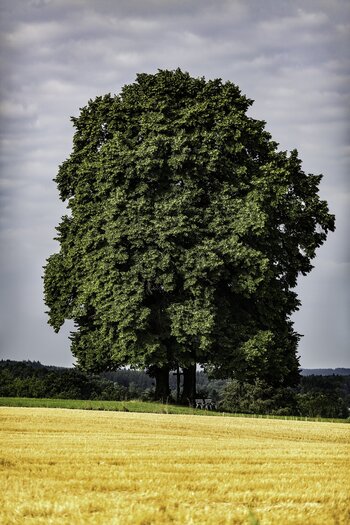
Pine (Austrian)
Pine
Rating: 4
Size: 50-60 ft
Lifespan: up to 100 years
Shade: Medium shade
Type: evergreen conifer softwood
The Austrian pine is commonly planted in yards throughout Ogden & Layton Utah. It is the most common pine tree grown in landscaping throughout Utah. This high growing tree boasts long4 to 5 inch needles and starts producing pine cones around age 12-15 years. This tree is a very hardy tree that withstands heat and drought and grows at a medium rate of about 2 feet per year.
Pros: Beautiful pine tree and scent enhance landscaping. Long lifespan.
Cons: We have seen a lot of these trees top over in windstorms if planted by themselves. In nature, pine trees grow close together and their root system entwines, thus allowing them to withstand storms. Best to plant distanced from from the house.
Like most trees, the pine also has pests including the Zimmerman pine moth and the turpentine beetle. These pests can be treated. Please call our tree service for more information.
Like most trees, the Austrian pine has its pests. The Zimmerman pine tip moth is a common culprit of this tree species that loves to cause damage. Turpentine beetles also like to attack the trunk of these trees.
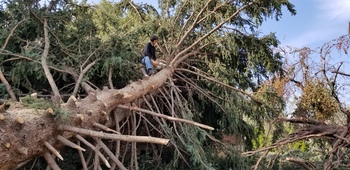
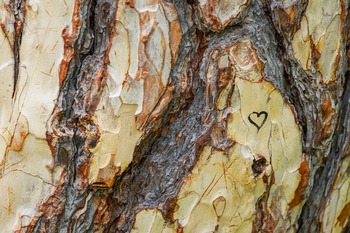
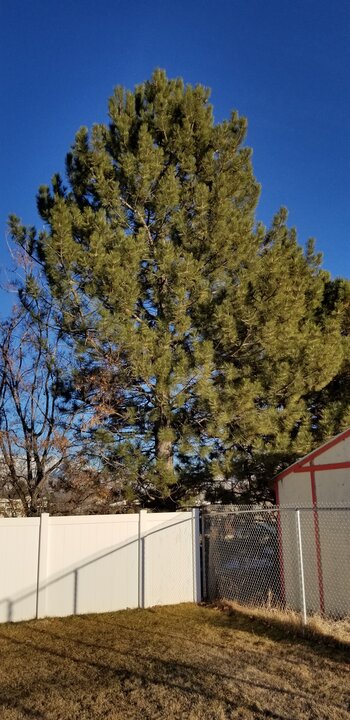
Smoke Bush
Smoke Bush
Rating: 5
Size: 6-10 ft depending on tree variety
Lifespan: 20 years
Shade: low shade; used as an ornamental tree, bush or hedge
Type: deciduous moderately fast 13 to 24 inches per year
The royal Purple Smoke bush is perhaps the best known and most popular of this tree variety. Commonly planted as a centerpiece due to its dark purple leaves. Not only do its purple leaves make it stand out, but the flowers look like puffs of smoke at the tips. This is definitely a unique an exotic bush and one that will beautify your landscaping and add variety.
Spruce (Blue or Colorado and Fat Albert)
Spruce (picea pungens)
Rating: 5
Size: 50-75 ft tall
Lifespan: 40-60 years
Shade: Medium to dense shade in a Christmas tree shape.
Type: Evergreen conifer. Fast growing softwood.
Known simultaneously as the Colorado or Blue Spruce, there seems to be at least one of these extremely popular “oversize Christmas trees” in every Ogden/Layton Utah yard that we visit. These majestic trees are planted for their blue color and their beauty. They are very pleasant to look at and are often planted in landscaping.
For those wanting a smaller version, the Fat Albert spruce tree is a 15-20 ft high version of the Colorado blue spruce.
Cons: Susceptible to Rhizosphaera disease, a fungus that causes needles to turn brown, die and fall off of the tree. Diseased trees can be treated with a fungicide.
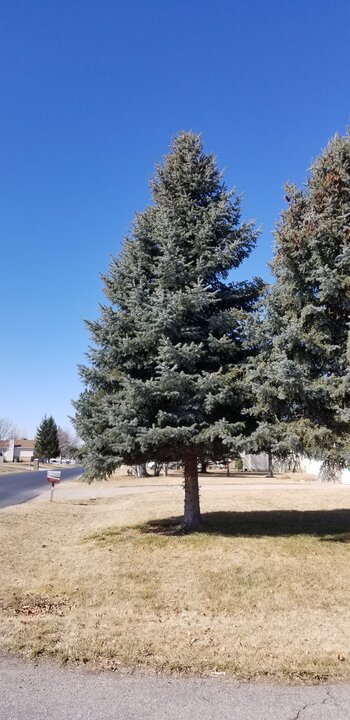
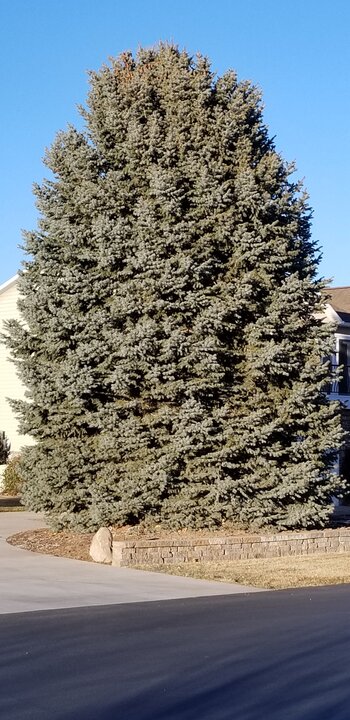
American Sycamore Tree
American sycamore Tree (Platanus occidentalis)
Rating: 5
Size: 20-60 ft tall
Lifespan: up to 250 years
Shade: Very dense shade tree with broad canopy; big beautiful slightly fuzzy leaves when green
Type: Fast growing medium density wood that spreads
A beautiful tree with bark that peels off and seed balls that drop from the tree, the sycamore is a favorite for its lush shade and pleasant appearance. Closely related to the London Plane Tree, the American Sycamore lines the main streets of many Utah cities including Brigham City, Utah and Spanish Fork, Utah. These majestic trees generally causes little problems with spreading, as I believe the version sold in tree nurseries may be sterile.
Possible diseases/pests of the American sycamore. Lace bugs, anthracnose (leaf and twig blight), mildew fungus, and bacterial leaf scorch can be problems. Our tree expert arborists are able to help treat these problems, especially if they are caught soon enough.
This is a great tree to be a focal tree in your yard. Some horizontal lower branches allow for good swings for kids.
One of the most common sycamore tree pests is the sycamore lace bug that gets its name from the lacy pattern on the adult’s wings, head, and chest. The insects feed on the undersides of the sycamore’s leaves.
This is a great tree to be a focal tree in your yard. Some horizontal lower branches allow for good swings for kids.
Pros: Big beautiful tree. Grows 6 feet per year. Strong tree that rarely gets damaged in wind storms. Established sycamore trees seem to do pretty well even though the American sycamore can be susceptible to diseases.
Cons: This tree drops large leaves starting in the fall and continuing through the spring. In fact, the emergence of new leaves pushes and detaches the old dead leaves. Because of this, homeowners usually end up cleaning leaves both in the fall and in the spring. The same is true for this tree’s seed balls. They tend to drop throughout the year. However, as this is a medium density wood, there are very few branches that drop—only leaves and seed balls. There is a little more clean-up to do but the unique beauty of this tree and the large amount of shade it provides seem to make the extra cleanup efforts well worth it.
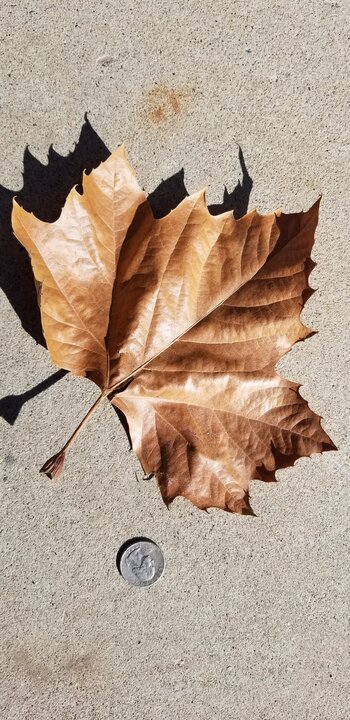
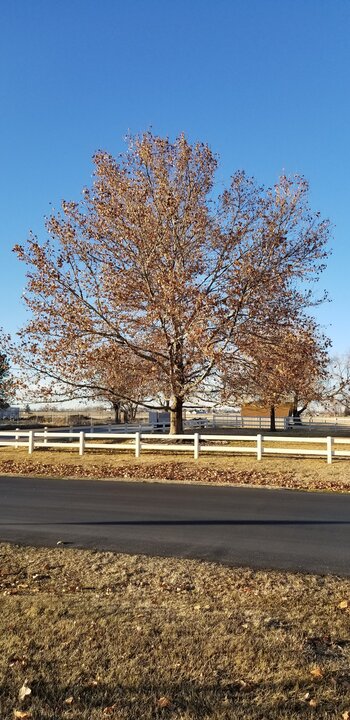
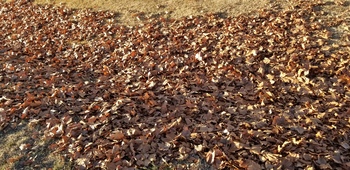
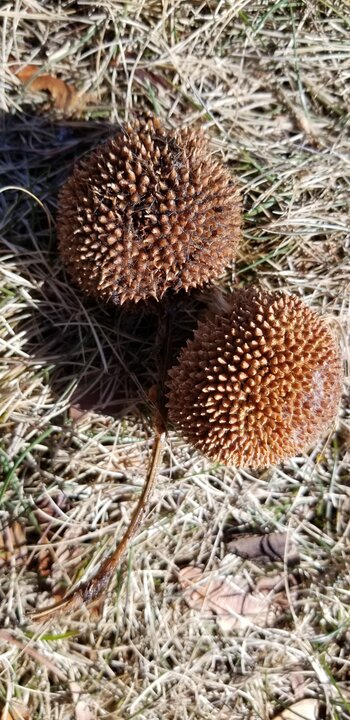
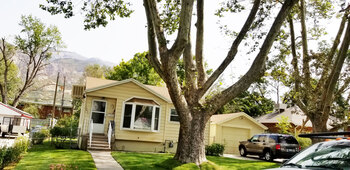
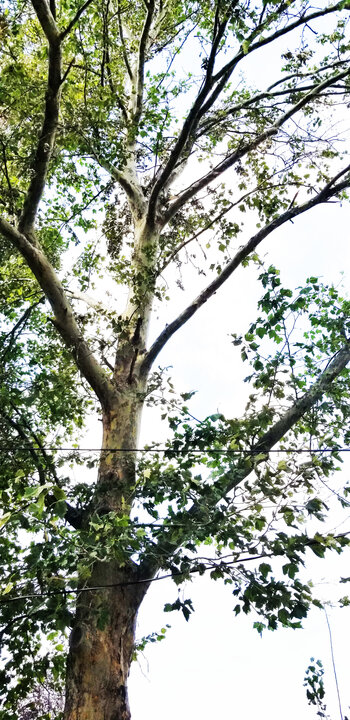
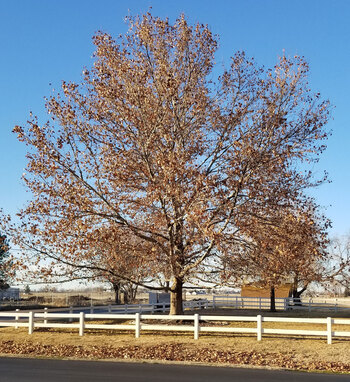
Tulip Tree
Tulip Tree (Liriodendron tulipifera)
Rating: 5
Size: 70-90ft
Lifespan: 100-200 years
Shade: Medium to dense shade; tear drop shaped
Type: deciduous hardwood fast growing
The tulip tree is one of the best kept secrets. Sometimes referred to as the “yellow poplar,” this tree has none of the problems of the poplars and it even has tulip shaped leaves and fragrant tulip shaped flowers.
Pros: Fast growing beautiful tree with tulip leaves and flowers.
Cons: Tulip trees limb’s are brittle and this tree frequently suffers from wind or storm damage
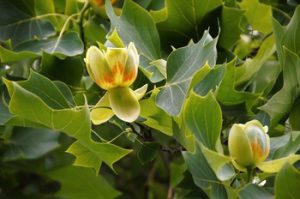
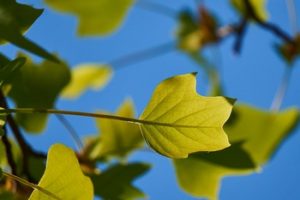
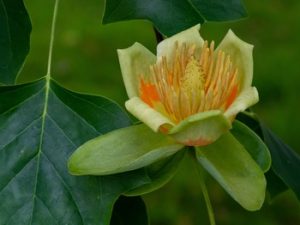
Common but not recommended trees:
Aspen Tree
Aspen Tree
Rating: 2
Size: 20-60 ft tall
Shade: dappled soft to medium shade
Type: Fast growing softwood; spreads fast through root suckers
The quaking aspen seems to be the iconic native tree in Utah. These high altitude trees do well in cooler mountainous areas. They are beautiful with white bark and brilliant yellow leaves in the fall. The leaves seem to shimmer and rustle in the wind, giving it the quaking aspen nickname.
These trees, however, are more temperamental if planted in the Ogden/Layton, Utah metro area since the heat and dry conditions in lower valleys is particularly hard on them. Stressed aspens ay suffer from scorched leafs, leaf spots, borers, cankers, galls and iron chlorosis as well as a host of other problems. These are best grown in cooler mountain climates that the tree is native to.
Despite these problems, the aspen still extremely popular among homeowners as a beautiful almost ornamental tree that beautifies landscaping. If you choose to plant an aspen tree in your yard, make sure to eliminate suckers as the tree spreads through the root system. In fact, the aspen tree is perhaps the largest living organism on the planet since entire forests can be just one large interconnected tree. In attempting to eliminate sucker trees that sprout in the lawn, be sure to use mechanical means to remove them (mowing, cutting, pulling up roots) since an herbicide will travel back up the root and destroy the larger aspen tree that you want to keep for its beauty.
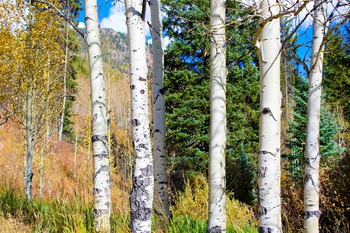
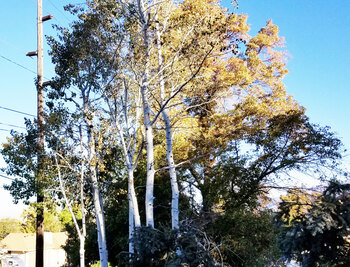
Cottonwood Tree
Cottonwood
Rating: 2
Size: 120 ft tall
Shade: very shady
Type: softwood, fast growing
The fremont cottonwood is perhaps the largest native Utah tree. Its broad crown averages 70 ft and it can grow as high as 120 ft tall. The massive trunks and limbs of this tree as well as the floating cottonseeds are what make this tree memorable. Growing along rivers and waterways, the cottonwood is home to eagles and other wildlife throughout Utah.
As far as homeonwers are concerned, a cottonwood is usually too big of a tree and too messy of a tree for their liking, that is unless they live on a large piece of land.
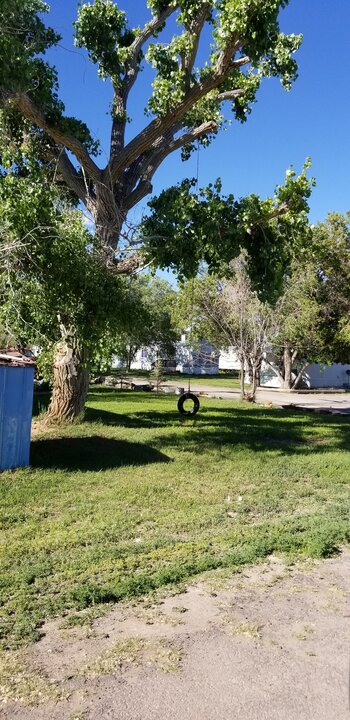
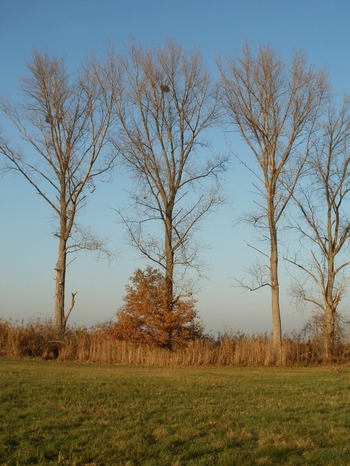
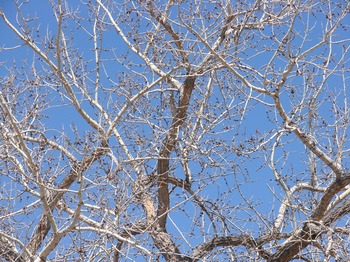
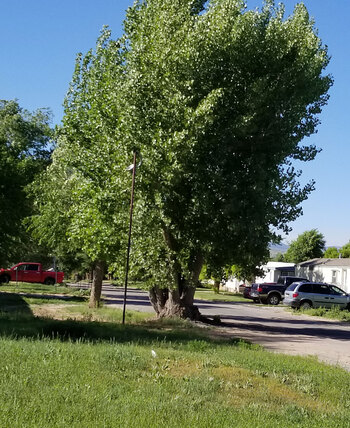
Poplar Tree
Poplar Tree
Rating: 2
Size: up to 8 ft in diameter and up to 150 ft high
Type: fast growing softwood
The poplar tree is a monster of a tree. It is quite popular among homeowners who build new homes because they want immediate shade. Like most softwood trees, the poplar has a short life. Most trees live between 30 and 50 years. At about 30 years, many of trunks and braches will start to die, giving the tree an unkempt appearance. It is hard to trim this tree back to look good since entire sections will completely turn to dead wood as the tree nears maturity.
If the plan is to plant the poplar tree for immediate shade while growing other more stable longer lasting trees, than that is a good plan. As the tree nears maturity, homeowners should seriously consider tree removal as the tree becomes a safety hazard. We have removed many poplars from rooftops after windstorms. We have also seen large pieces of dead wood land in yards and on structures as the tree reaches maturity and starts to die.
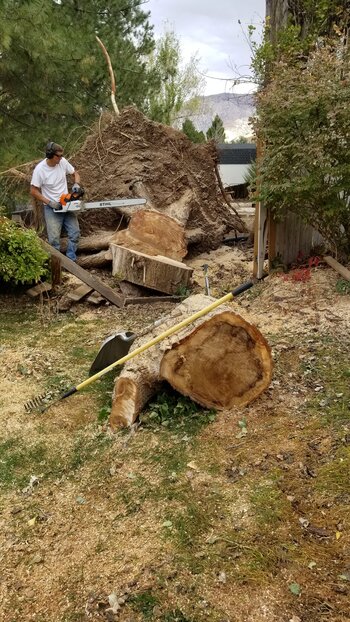
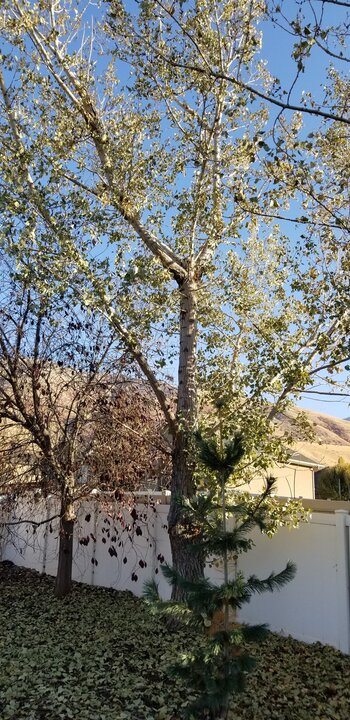
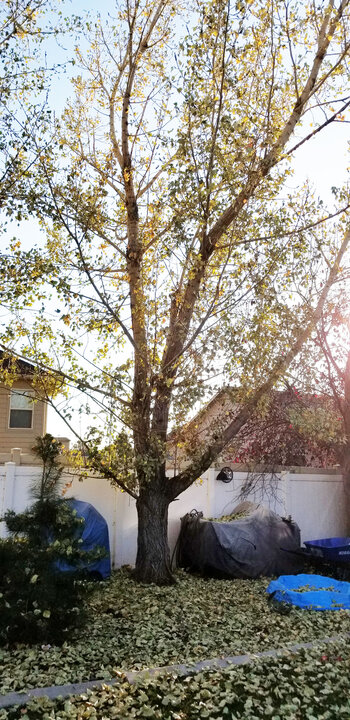
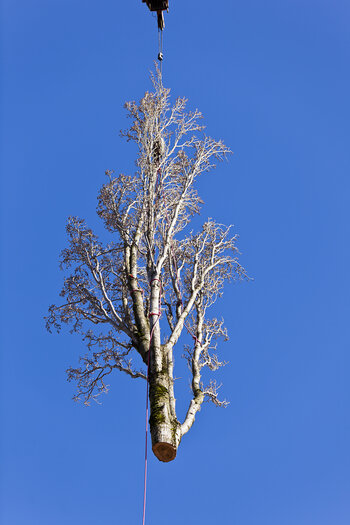
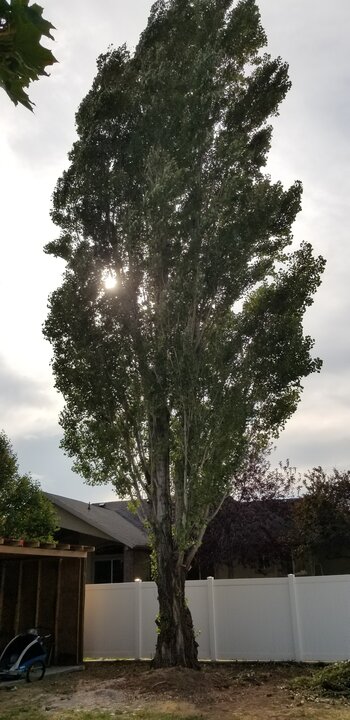
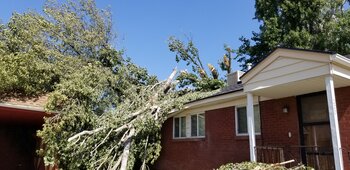
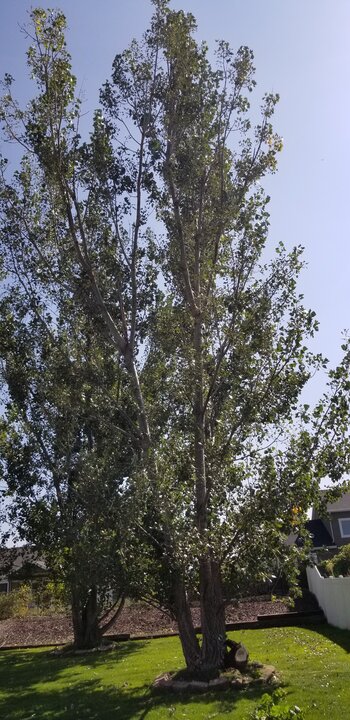
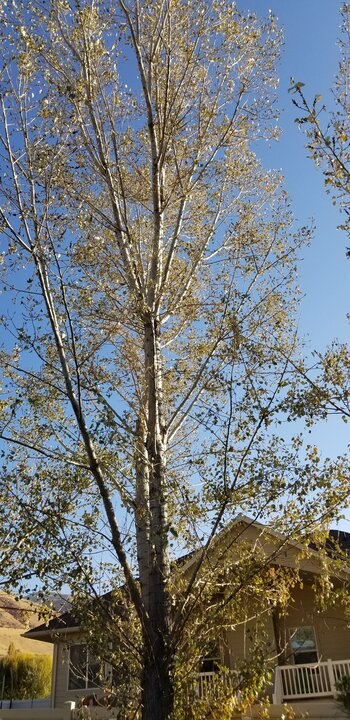
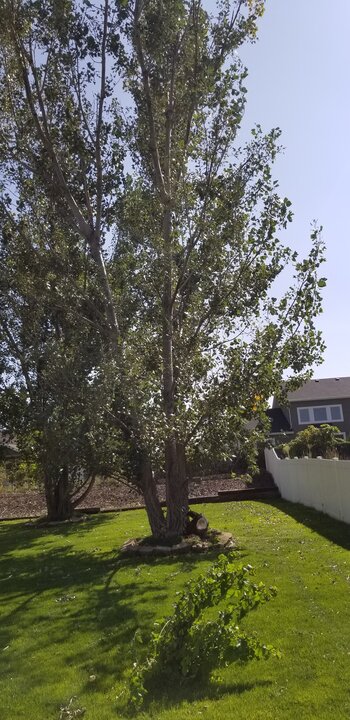
Walnut Tree (English and Black)
Walnut
Rating: 4
Size: English walnut tree 60 ft tall, black walnut height 75 ft
Lifespan: English walnut tree 150 years, black walnut tree 250 years
Shade: Dense shade
Type: deciduous hardwood slow growing nut tree
Most of us are familiar with the English walnut. This is the nut that we buy shelled or whole at the local grocery store. We are also familiar with black walnuts as we have seen cutting boards, pianos, wooden hope chests, antiques, and other artifacts crafted out of its sturdy dark wood. For many homeonwers, a walnut is not a practical tree because the fall nut clean up can be a daunting job. The leaves and nuts also can harm livestock and horses. Still, there are many lovers of this tree, including myself. I planted my walnut tree away from the lawn area so that I don’t have to stress about misplaced nuts.
A slow growing hardwood, the walnut leaves, bark, and overall tree shape are very attractive. Walnuts are healthy and fun to crack and eat. This tree should be definitely considered for the homeowner who likes to grow food while enjoying a beautiful hardwood.
Both the English and black walnut do terrific in the Ogden and Layton area. These are hardy trees with few pest and disease problems.
Note: these trees tend to attract squirrels, chipmunks, and crows.
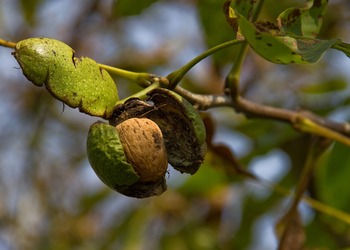
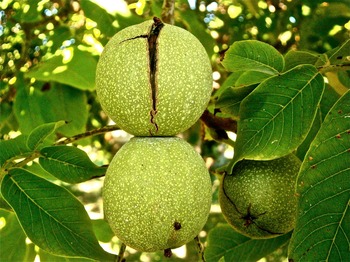
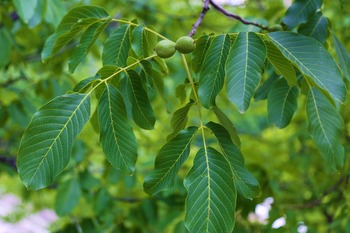
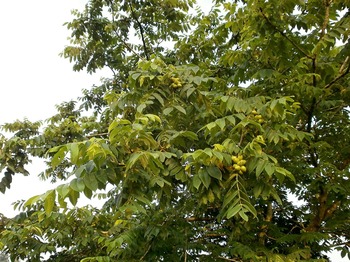
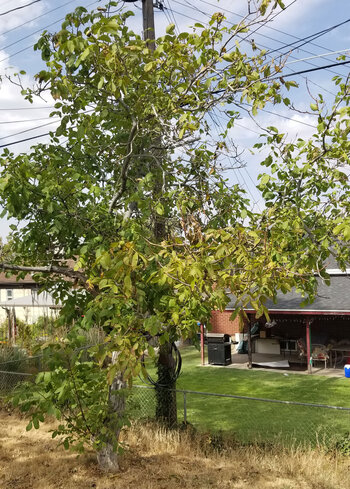
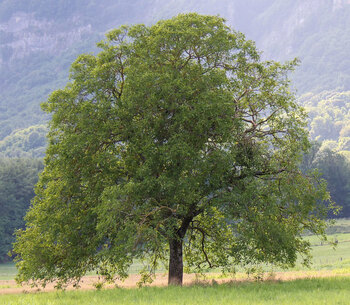
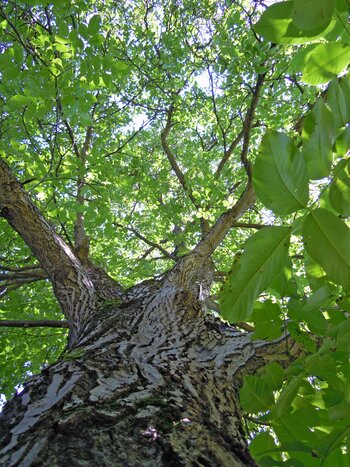
Willow Trees (globe, weeping, corkscrew)
Willow Tree (weeping, globe, corkscrew willow trees)
Rating: 2
Size: 30-40 ft
Lifespan: 30-40 years
Shade: Medium to dense shade in a Christmas tree shape.
Type: Medium to dense shade depending on tree variety. Probably the fastest growing tree commonly planted in yards.
Willows are the very first trees to start to come out in the spring. Typically they start to blossom sometime in March as the snow starts to recede. Not long after, leaves bud and the tree begins to take shape before other trees emerge from winter.
The willow is popular among homeowners for many of the same reasons that poplar trees are. Planting a willow can give you shade in a matter of a few years. The globe willow is a highly drought resistant willow for those who are looking to plant a tree in an area that doesn’t receive regular water. Corkscrew willows are known for their twisty branches that look like a corkscrew. Globe willows create a beautiful half globe. Weeping willows have hanging branches that sway in the wind and create a picturesque weeping tree much like the weeping flowering cherry tree and the weeping birch tree.
Problems
Willows are highly susceptible to aphids, bores, and a host of other problems. We recommend spraying these trees annually to enhance their longevity.
Pros:
Beautiful and enhance landscaping. In our opinion, the willow tree is the fastest landscaping tree that exists. So if you want immediate shade, this is the tree for you.
Cons:
Tenacious roots that seek out water and can destroy underground pipes and septic systems. They drop a lot of branches and as a fast growing softwood are susceptible to wind storm damage. These trees often grow fast enough during the first 25 years of their life that they stay pretty and in a sense grow faster than disease and pests. However in the end, the disease or pest catches up and the tree needs to be removed in the 30-40 year range. We recommend regular disease and pest treatment to enhance the life of this tree.
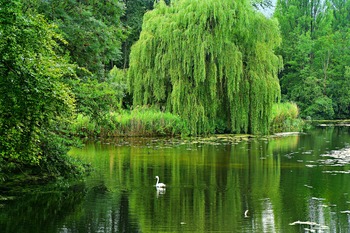
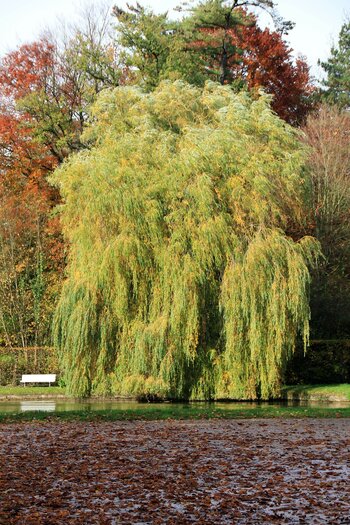
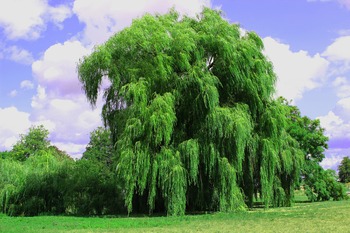
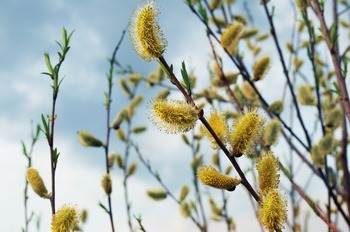
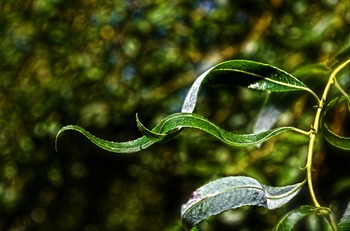
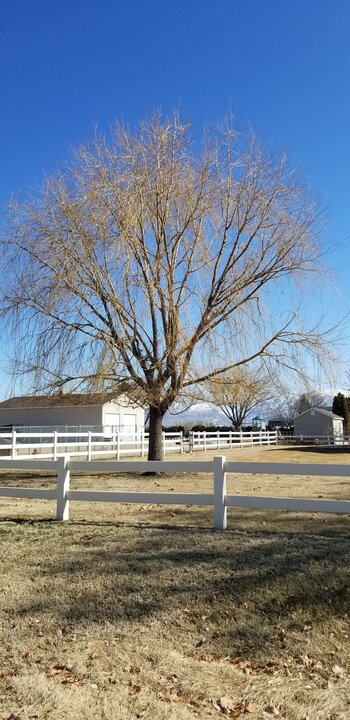
Trash trees, not recommended.
Box Elder Tree
Box Elder tree
Rating: 1
Size: 25-50 ft
Shade: good shade
Type: softwood, fast growing
A native of Layton & Ogden Utah, the Box Elder, or Box Elder Maple Tree is a very messy softwood that frequently looks ragged or disheveled from limbs breaking and falling to the ground. The main problem with this tree is that box elder females have thousands of seeds and they also attract the very pesky box elder bug. It is not uncommon for hundreds of box elder bugs to swarm a home’s window. As you might guess, box elder bugs make their way into homes. They are harmless but annoying.
This tree is also a fast growing softwood that spreads rapidly. Saplings grow in landscaping and even in cracks in the driveway. Like the maple, the box elder has helicopterlike fins that propel the seeds far and wide. Because the box elder tree wood is so soft, it is prone to breaking, making it a hazard for people and structures near the tree.
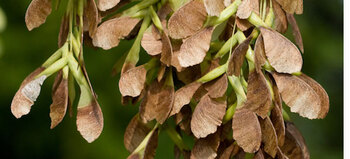
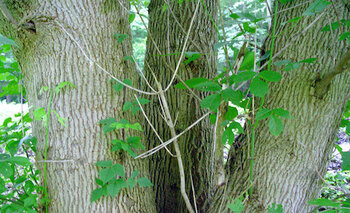
Honey Locust Trees (wild native variety)
Honey Locust (wild or native variety)
Rating: 1
Size: 40 ft
Lifespan: up to 100 years
Shade: light dappled shade
Type: deciduous rapid growth medium density wood
While the domestic honey locust sold by tree nurseries is one of my favorite trees, the wild native version has large 4 to 6 inch thorns. These thorns are a safety hazard to people and animals. The wild native version of this tree also has fertile seeds and spreads.
We recommend tree removal for this native tree and replacement with a safer variety of tree.
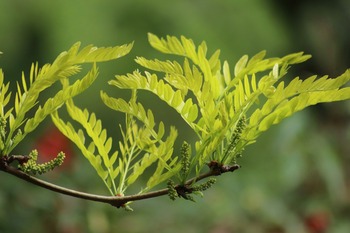
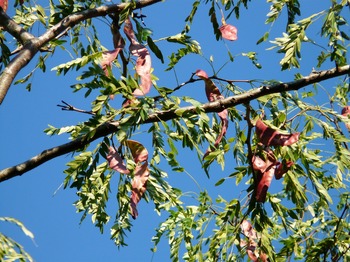
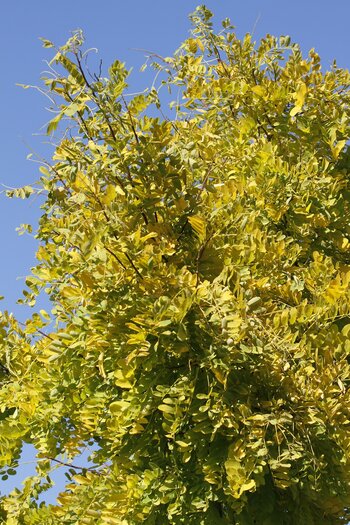
Russian Olive Tree
Russian Olive
Rating: 1
Size: 30-40 ft
Lifespan: up to 100 years
Shade: Medium shade
Type: Invasive deciduous
Russian olive trees are very hardy and difficult to kill. These trees are spread by birds eating the seeds. The light green fuzzy olive complexion leaves and flowers are fragrant and can cause allergies. Growing abundantly along ditches and rivers throughout Utah, this invasive tree poses particular harm to livestock. The large thorns are particularly noxious and are commonly found in horses feet. Cutting down this tree does not solve the problem as it will generally send up 3 or 4 more suckers right away.
Our recommendation is to cut this tree near the base, carefully remove the branches and thorns, and apply a triclopyr based herbicide to the cambium. This process will permanently kill the tree.
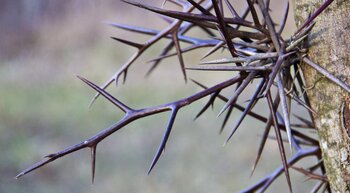
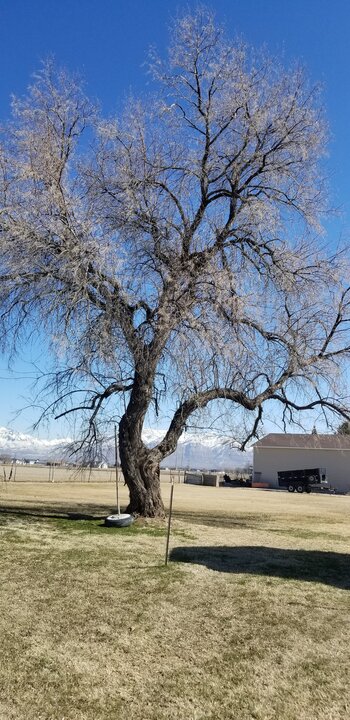
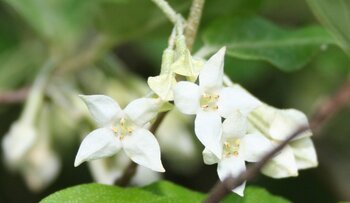
Siberian or Chinese Elm Tree
Siberian or Chinese Elm
Rating: 1
Size: 100 ft tall
Shade: medium to dense shade
Type: Fast growing softwood invasive tree
If you have read any of my tree advice blog posts, you will realize that the Siberian elm is my #1 most hated tree. Not only does this invasive tree spread extremely fast through the thousands of seeds it drops each fall but this tree has the most tenacious roots of any that we have seen. Siberian elm tree roots routinely lift concrete, break foundations, and destroy water and sewer lines. They also attract the elm beetle and have slim flux problems.
Our recommendation is to remove this invasive tree and all saplings as soon as possible. The sooner this tree is removed, the less property damage the homeowner is likely to incur.
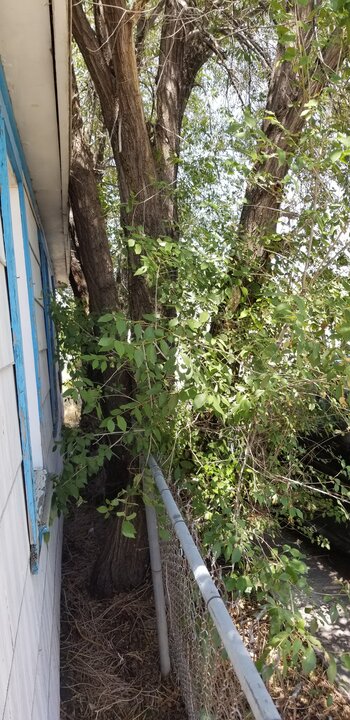

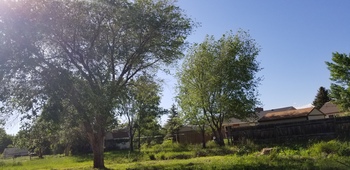
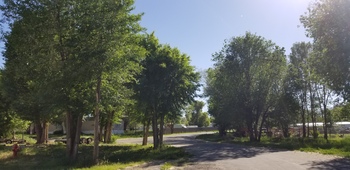
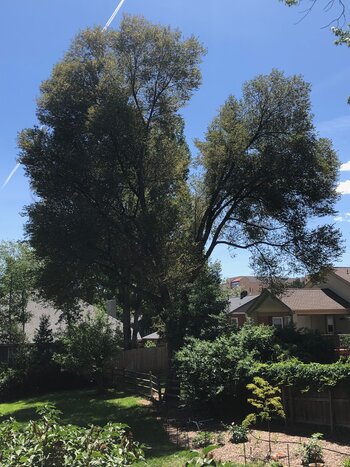
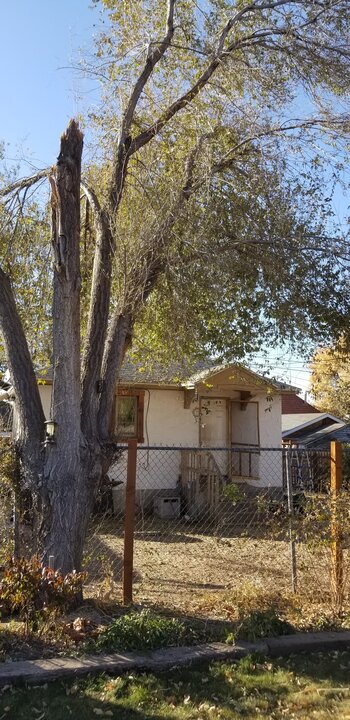
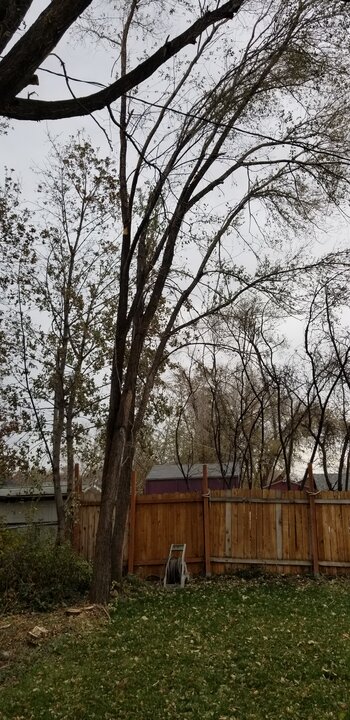
SumacTree (Stinking Sumac or Tree of Heaven)
Sumac Trees or Tree of Heaven
Rating: 1
Size: up to 80 ft
Type: softwood, very fast growing, invasive specie
The sumac is a bit of a misnomer. Also called the “Tree of Heaven,” it would be a better fit to call it the tree of hell due to the havoc it wreaks on property and landscaping. The broad leaf and giant weed like aspects of it make it look like a species right out the Jurassic period. A deciduous native to China, the sumac or tree of heaven (Ailanthus altissima) is an invasive tree that has become widespread throughout the United States. Thousands of these trees infest yards through Ogden and Layton, Utah and surrounding areas. What makes these trees so invasive is that a single tree can produce hundreds of thousands of seeds. These seeds have helicopter-like blades that send them travelling in the autumn. Seeds land all over landscaping and grass and the next year, the entire lawn is full of fast growing baby saplings.
The sumac tree also has a strong unpleasant stench that has earned it the nickname stinking sumac. There is also a beautiful ornamental “tame” variety of the sumac called the Staghorn Sumac. This variety is safe to use in yards and is commonly planted in the southern United States.
Control: Remove the trees as soon as possible. Pull all saps up by their long tap roots. Apply triclopyr based herbicides to young trees on the cambium or leaves of younger trees. Larger trees need to be removed by a professional tree service.
